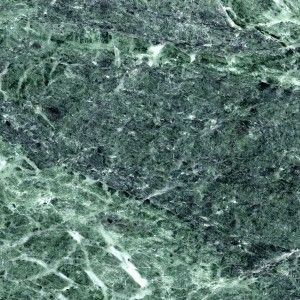How California is killing us
By ANTHONY PIGNATARO
The danger is apparently everywhere, all around us. No need to worry anymore about a budget tens of billions of dollars out of balance, or hundreds of millions in unfunded pension liabilities, because this is way worse… And don’t even try to run and hide, because this threat is far too insidious to escape.
California itself is killing us.
“We are littered with abandoned mines,” Elizabeth Martin, CEO of The Sierra Fund, said at a June 22 press conference announcing the release of their new Gold Country Recreational Trails and Abandoned Mines Assessment detailing asbestos contamination at some of the state’s most popular off highway vehicle destinations, which are often abandoned mines. “Some of the mines we looked at are very accessible. Some had high levels of toxic materials in the dust.”
A press release sent out shortly before the conference – which gathered all of two reporters (including me) to the west steps of the State Capitol – was even more ominous. “More than 100 years after the end of the Gold Rush era, the environmental, cultural and health impacts of that time have still not been assessed or addressed,” Martin said in the release. “The time has come for a serious assessment of abandoned mines, and the public needs to be informed about potential exposure to toxic heavy metals and asbestos in areas with abandoned mines.”
The Sierra Fund just looked at a few of the state’s 47,000 abandoned mines (most of which are on federal land), but their findings were still scary: lead at the Marall Chrome Mine pit, which is a popular OHV area; chrysotile asbestos along Saddleback Road in Downieville; Arsenic near the Columbo Mine and Slug Canyon in Downieville as well as Banner Mountain Trail in Nevada City.
Of all the toxic chemicals Sierra Fund found, the chrysotile asbestos is the most troubling – especially for state officials. “There’s no known safe exposure level for asbestos,” Sierra Fund Science Director Carrie Monohan said at the press conference.
What’s more, chrysotile asbestos – the most common form of asbestos – naturally occurs nearly everywhere in the state. It often appears in a rock called serpentine, a typically greenish, fine-grained metamorphic rock that’s found in 49 of the state’s 58 counties. There’s apparently so much of it in El Dorado County that Oak Ridge High School there is required $2.5 million in anti-asbestos work that included covering nearly every exposed bit of dirt with grass, plants or concrete.
In fact, serpentine is so widespread in California that it’s actually the official state rock. Well, for the time being.
Senate Bill 624, originally introduced by Sen. Gloria Romero, D-Los Angeles, to change the way people become members of refuse disposal district boards, now seeks to strip serpentine of its official state rock status.
“This bill would remove serpentine as the state rock and lithologic emblem and would leave the state rock unspecified,” states the bill, which unanimously passed out of the Assembly’s Natural Resources Committee the day before Sierra Fund’s press conference. “The bill would also make a statement of findings about serpentine and its association with an increased risk of the cancer mesothelioma.”
Not to question Romero’s sincerity in wanting the state to stop its de facto approval of one of the most dangerous non-radioactive substances around, but the whole reason serpentine became the state’s official rock was because of it contained gobs of asbestos.
“In 1965 a group of lobbyists promoted serpentine as the state rock because it was a very mineral-rich rock,” said John Parrish, the State Geologist of California and head of the California Geological Survey. “It has asbestos, chromite, magnesium and cinnabar, which is mercury. Cars don’t really use chrome anymore, and there’s no longer a big need for mercury thermometers, but asbestos is still an extremely important mineral in a number of ways.”
The anti-serpentine craze – if you can call it that – first began to gain ground last year with the creation of the group Asbestos Disease Awareness Organization’s “Drop the Rock” campaign. Last November, the ADAO succeeded in convincing the Manhattan Beach City Council in Southern California to pass a resolution that called on the state to decertify serpentine as our official state rock “in support of world eradication of asbestos.”
Considering that the ultimate goal is the “eradication” of asbestos, you’d think that activists and officials would be calling for actions stronger than non-binding resolutions and decertified state rocks. But they’re not.
Even more frightening than off road bikes and quads kicking up toxic dust and particles in our state’s thousands of abandoned mines is the fact that, at least for the time being, there’s not much that’s going to be done about it. In fact, the Sierra Fund itself is merely calling for the “immediate posting” of warning signs at the abandoned mines mentioned in the report.
“We can’t say an area should be closed,” Martin said. “We want an easily understood sign. I’ve always said the cheapest way to remediate an abandoned mine is to plant poison oak and blackberry. No one’s going to go there now.”
There’s also a case to be made for keeping serpentine as our state rock. After all, it does literally make up the foundation of much of the state. It is also, as Parrish pointed out, still a valuable source of a valuable mineral. And when all is said and done, being the official state anything doesn’t really do much good, even for those plants and animals — and dances — that make the list.
The Square Dance has been the state’s official folk dance since 1988, but we’re all still waiting for that big Square Dance revival. And then there’s the California Grizzly, the official state animal. If naming the Grizzly our state animal was meant to help it, it hasn’t been working — it’s been listed as extinct since 1924.
Related Articles
Brown meanders, but sticks to taxes
JUNE 2, 2011 By STEVEN GREENHUT Gov. Jerry Brown’s talk to the California State Association of Counties was more meandering
Obamacare takes turn for the worse in CA
As the Affordable Care Act and the Covered California health exchange enter their second year, Californians have begun to encounter
In Long Beach, taxis to copy the Uber approach
The arrival of Uber and Lyft has had a radical effect on surface transportation and seems likely to lead to





